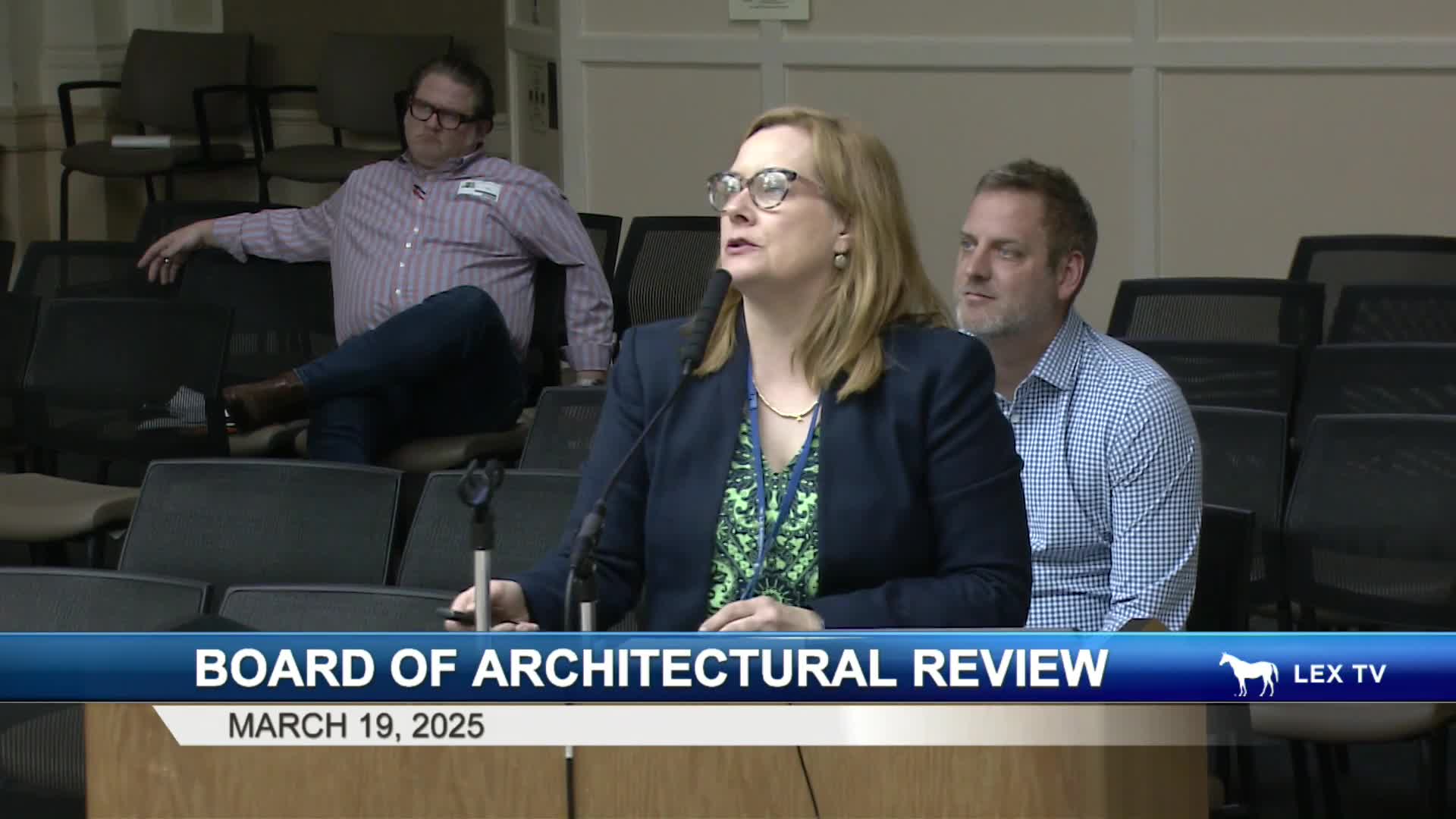Design proposal for two-story structure sparks concern at Hampton Court review
March 21, 2025 | Lexington City, Fayette County, Kentucky
This article was created by AI summarizing key points discussed. AI makes mistakes, so for full details and context, please refer to the video of the full meeting. Please report any errors so we can fix them. Report an error »

In a recent meeting held on March 21, 2025, the Lexington Board of Architectural Review (B.O.A.R.) discussed a proposed two-story structure on Hampton Court, a site with historical significance dating back to the 1920s. The proposal aims to construct a new building that would include an attached garage and a courtyard, while also addressing concerns about the preservation of a significant tree on the property.
The meeting highlighted the importance of maintaining the architectural integrity of the neighborhood, which features a mix of historic and modern structures. Board members raised several critical questions regarding the appropriateness of the new design in relation to the existing historic cottage, including whether the proposed structure would overshadow the historic building and alter the streetscape. Concerns were voiced about the scale and height of the new construction, with some members expressing that it could overwhelm the existing structures and disrupt the neighborhood's character.
Mr. Cheetham, the designer of the proposed structure, emphasized the intention to adhere to design guidelines that respect the historical context of the area. He mentioned the possibility of incorporating a glass breezeway to connect the new building with the existing cottage, aiming to preserve the latter as much as possible. However, the board members were cautious, noting that the existing cottage has become a part of the neighborhood's identity over the years, and any new construction should not detract from its historical value.
The discussion also touched on the shared driveway situation, which remains unresolved, as it is unclear whether there is an easement or agreement in place for access. This aspect is crucial for the feasibility of the proposed development, as it would impact parking and accessibility for both the new and existing structures.
As the board deliberated, they acknowledged the unique nature of the site, which has remained undeveloped for over a century. The proposal's potential to fill this "missing tooth" in the neighborhood was considered, but members stressed the need for careful consideration of how the new structure would fit within the existing urban fabric.
In conclusion, the meeting underscored the delicate balance between development and preservation in Lexington's historic neighborhoods. The board's decision on whether to allow the application for a Certificate of Appropriateness (COA) will depend on further evaluations of the design's compatibility with the surrounding area and its impact on the historic character of Hampton Court. The discussions will continue as the board seeks to ensure that any new construction enhances rather than detracts from the community's historical narrative.
The meeting highlighted the importance of maintaining the architectural integrity of the neighborhood, which features a mix of historic and modern structures. Board members raised several critical questions regarding the appropriateness of the new design in relation to the existing historic cottage, including whether the proposed structure would overshadow the historic building and alter the streetscape. Concerns were voiced about the scale and height of the new construction, with some members expressing that it could overwhelm the existing structures and disrupt the neighborhood's character.
Mr. Cheetham, the designer of the proposed structure, emphasized the intention to adhere to design guidelines that respect the historical context of the area. He mentioned the possibility of incorporating a glass breezeway to connect the new building with the existing cottage, aiming to preserve the latter as much as possible. However, the board members were cautious, noting that the existing cottage has become a part of the neighborhood's identity over the years, and any new construction should not detract from its historical value.
The discussion also touched on the shared driveway situation, which remains unresolved, as it is unclear whether there is an easement or agreement in place for access. This aspect is crucial for the feasibility of the proposed development, as it would impact parking and accessibility for both the new and existing structures.
As the board deliberated, they acknowledged the unique nature of the site, which has remained undeveloped for over a century. The proposal's potential to fill this "missing tooth" in the neighborhood was considered, but members stressed the need for careful consideration of how the new structure would fit within the existing urban fabric.
In conclusion, the meeting underscored the delicate balance between development and preservation in Lexington's historic neighborhoods. The board's decision on whether to allow the application for a Certificate of Appropriateness (COA) will depend on further evaluations of the design's compatibility with the surrounding area and its impact on the historic character of Hampton Court. The discussions will continue as the board seeks to ensure that any new construction enhances rather than detracts from the community's historical narrative.
View full meeting
This article is based on a recent meeting—watch the full video and explore the complete transcript for deeper insights into the discussion.
View full meeting
